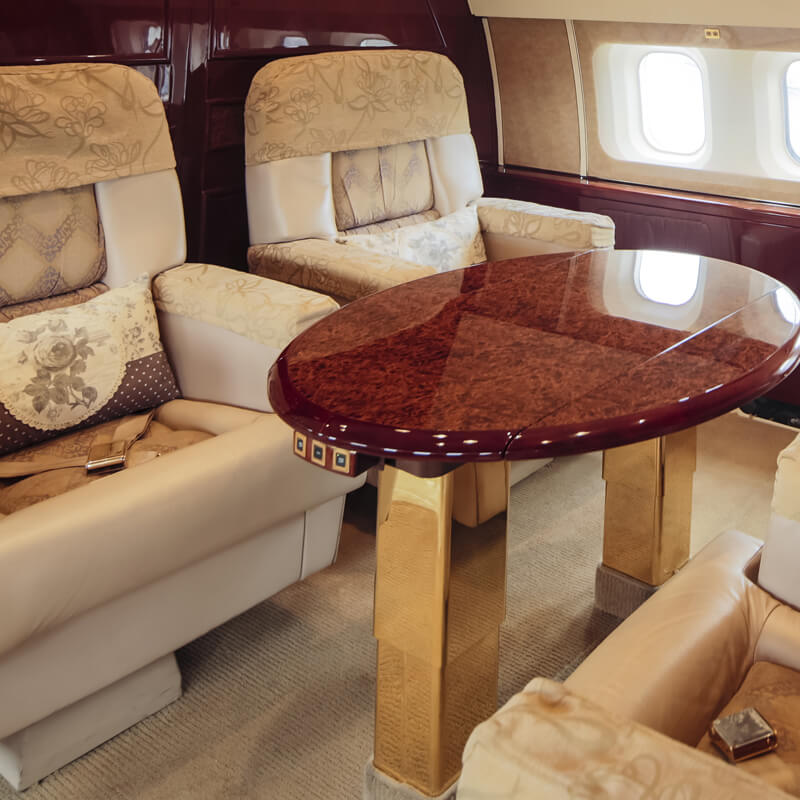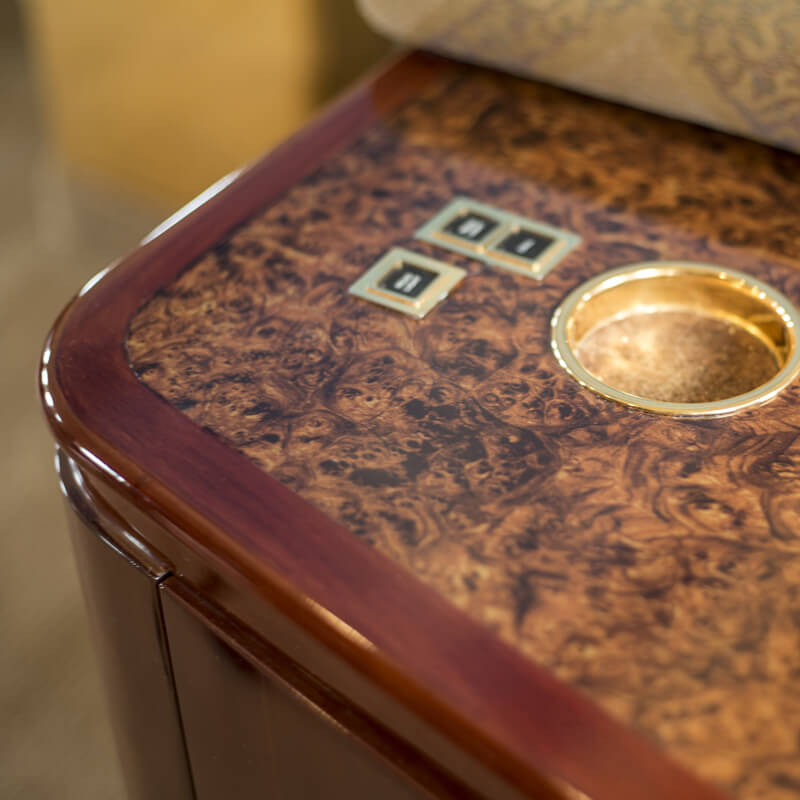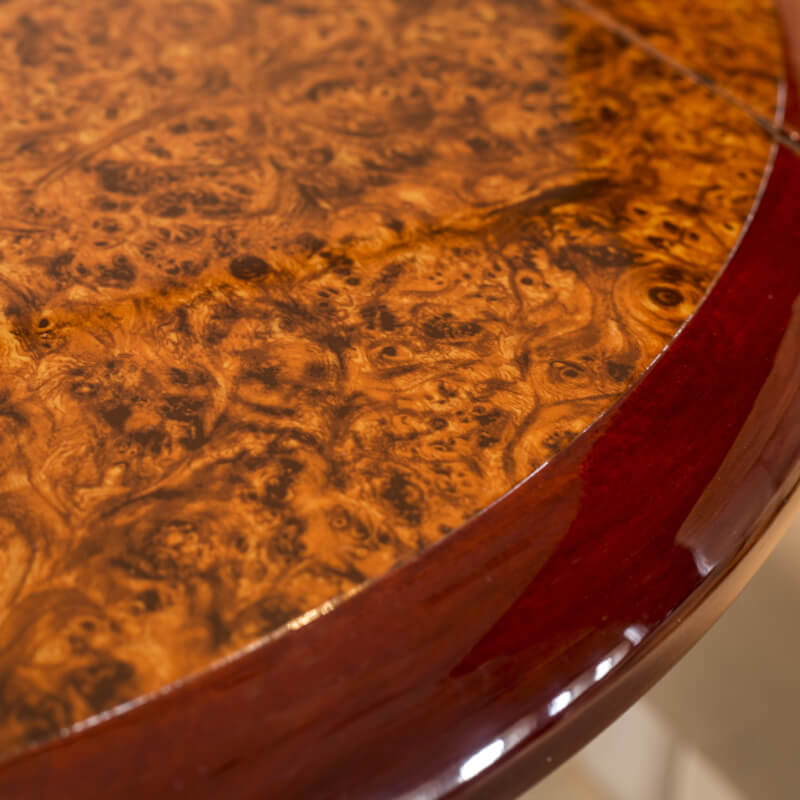What ‘wood’ you say now is the best option for an aircraft interior?
You cannot ignore the huge advantages of covering substrates with aqua transfer
Date: 1st October 2018
Categories: EASA Approvals // Aircraft interior design // Design & build // Upholstery & trim // Aqua transfer // Seating solutions // Tables
As aircraft interior experts we are continually challenged with creating solutions which are cost and time effective, but more importantly meet EASA regulations. Luckily the development of alternative coverings and new technology means we can tick all the boxes which often means saying goodbye to traditional material.
For many years wood veneer has been the material of choice to add elegance and a quality feel to private, corporate and VIP aircrafts. A quality wood veneer like Brazilian rosewood which offers an exquisite pallet of warm colours can create a striking aircraft interior. These rich tones when combined with leather seating have produced numerous elite cabin environments for Corporate and VIP aircraft.
Aside from its aesthetic qualities wood veneer, it was used in thin sheets to save weight. However, when it comes to durability and meeting stringent fire, smoke, heat release and toxicity regulations the use of this material is now restricted and, in some cases, requires certification exemptions from airworthiness regulations. Wood veneer can now only be used under special conditions and approval from EASA on new generation transport aircraft and in older aircrafts that are not required to meet the new cabin safety regulations.
Quite often these older aircrafts interiors are refurbished because wood veneer is thin and prone to water and sun damage. Also, because wood veneer is overlaid onto another substrate which expands and contracts at a different rate - veneer can crack or peel which looks unattractive and tired. Therefore, a wood veneer which was chosen because of its timeless aesthetic quality will typically need replacing.
Replacing wood veneer is of course achievable but can become expensive and lead times are long which makes it tricky if the aircraft is only available for a short period whilst maintenance is carried out. There is also the issue of sourcing a replacement wood veneer which matches, as each cut is unique in its colour and grain. However, one of biggest issues is the fact that wood veneer doesn’t meet the new stringent fire, smoke, heat release and toxicity regulations
Therefore, many operators are now using a flame retardant process as an alternative solution. Aqua transfer which is also known as hydro graphics, dip film or aqua print, is a magical process which creates decorative finish using vinyl film floated on water. The film can be applied to a variety of substrates used within an aircraft cabin and meets stringent flame and smoke retardant standards. It is then topped with a lacquer to a matt or high gloss finish.
The process is straight forward and cost efficient. The old wood veneer thickness is measured and replaced with identical thickness sheet metal or composite material and then routed to shape on our CNC routers to conform to the identical shape of the original veneer. The new hydrographic film is applied and top coated with our tested and proven lacquer systems that conform to all the latest Flammability regulations. The end product is a nearly identical match to the original veneer at a fraction of the cost to replacement veneer.
This durable covering offers great design flexibility as it is possible to create bespoke film. The possibilities are endless when it comes to colour and pattern which means a wood effect can be easily achieved. The other big advantage is that aircraft interior panels can be easily covered regardless of their size or shape, especially when you have a super-sized tank like Starling Aerospace. Aqua transfer is a quick and a cost-effective way of reviving or transforming an aircraft cabin in record time because of the consistent manufacturing process and availability of aqua transfer films.
Although there will always be a place for traditional materials like wood veneer you cannot ignore the huge advantages of covering substrates with aqua transfer. New film technology provides the depth and appearance of real wood veneer but with the added key benefit of full compliance to the strict flammability requirements for new generation aircraft. In addition, once in service, should a panel be damaged, it can be repaired to exactly match the existing pattern which is nearly impossible with real wood veneer. It is undoubtedly the best option available to future proof an aircraft interior especially if you are ticking all the boxes.
Latest press releases:
-
Starling Aerospace scales up its production capabilities ready for 2020
Date: 4th November 2019
Categories: EASA Approvals // Repair & overhaul // Refurbishment // Design & build // Upholstery & trimStarling Aerospace has made further improvements to its facilities increasing its capabilities for aircraft interiors
-
Date: 16th April 2019
Categories: Design & build // Upholstery & trim // Aqua transfer // Seating solutions // Tables -
Experience the next generation VIP Track and Swivel Seat at AIX 2019
Date: 24th March 2019
Categories: EASA Approvals // Aircraft interior design // Design & build // Upholstery & trim // Aqua transfer // Seating solutions // TablesVisit Starling Aerospace (Stand number 7A80)









